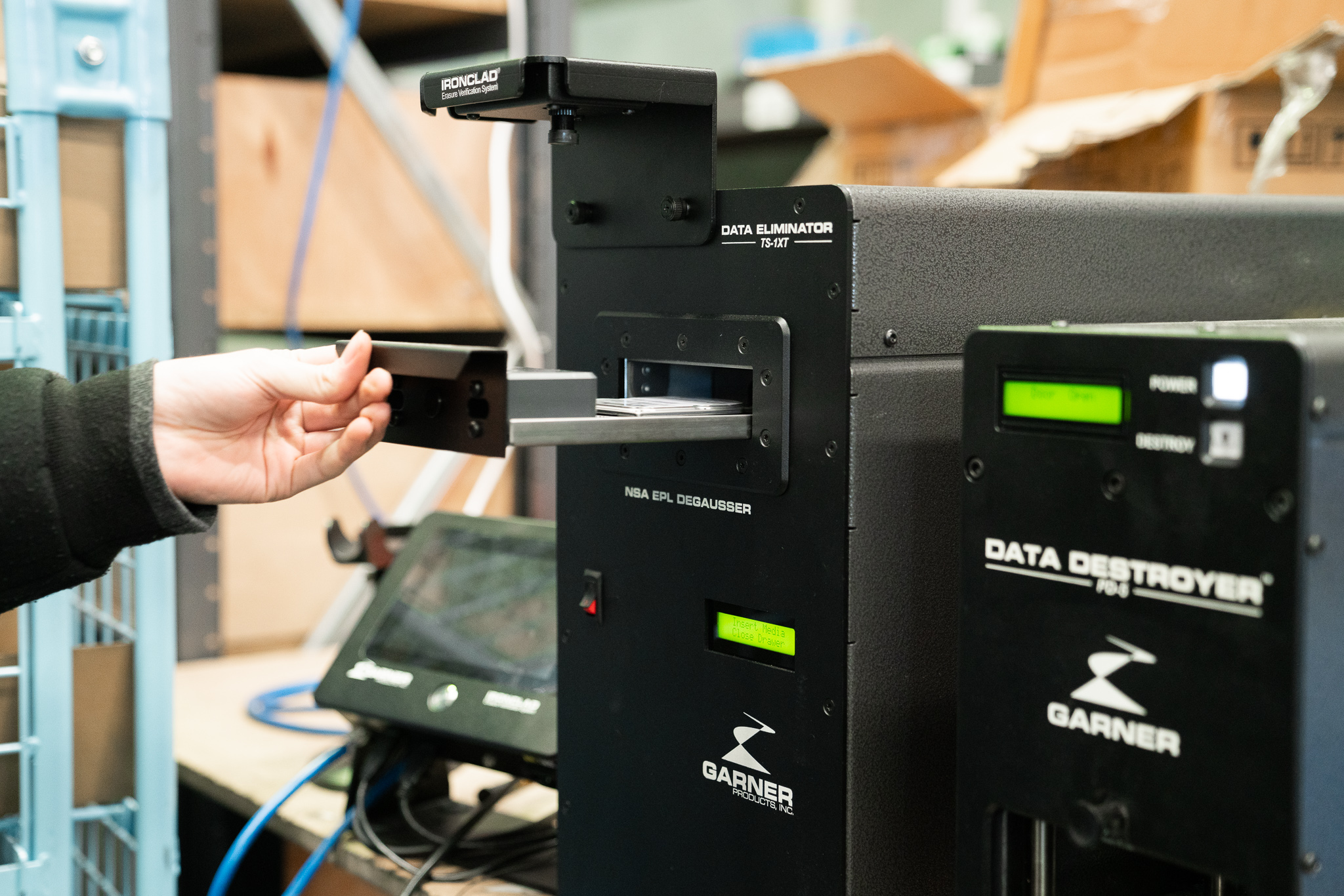Contents
In this modern age of technological advancements, data is the lifeblood of organizations and individuals. The protection of sensitive data is of paramount importance, as data breaches can have far-reaching consequences. As a result, the role of data destruction machines in ensuring data security has become increasingly vital. This article explores the significance of machines like Hard Drive Shredder. Degaussers, SSD Crushers, etc., in safeguarding sensitive information, offering insights into their types, benefits, and best practices.
I. Types of Data Destruction Machines:
Data destruction machines come in various forms, each tailored to different types of media and data-bearing devices:
Shredders for Paper Documents
Shredders are the go-to choice for destroying physical paper documents. They reduce documents into unreadable confetti-like pieces, rendering sensitive information irretrievable.
Degaussers
Degaussers are designed to erase magnetic media, such as tapes and floppy disks, by altering or destroying the magnetic field, making data recovery impossible.
SSD Crushers
As solid-state drives (SSDs) gain popularity, the need for specialized data destruction machines grows. SSD crushers use immense pressure to physically destroy SSDs, rendering them unusable.
HDD Shredders
For digital data, using a Hard Drive Shredder is essential. These machines physically shred hard drives, ensuring that their data is beyond recovery. This is especially crucial for organizations disposing of old hardware.
II. Benefits of Data Destruction Machines:
Using data destruction machines offers several key benefits:
Data Privacy and Compliance
Data destruction machines help organizations adhere to data protection regulations, such as GDPR and HIPAA, by ensuring that sensitive information is properly disposed of, reducing the risk of data breaches and hefty fines.
Protection Against Identity Theft
By destroying documents and digital media that contain personal information, individuals can protect themselves from identity theft and fraud.
Environmental Responsibility
Proper disposal of data-bearing devices through data destruction machines is environmentally responsible. It prevents electronic waste from accumulating in landfills and promotes recycling.
Cost Savings
Investing in data destruction machines can lead to long-term cost savings by decreasing the need for expensive data recovery services and potential legal fees resulting from data breaches.
III. Best Practices for Using Data Destruction Machines:
To maximize the effectiveness of data destruction machines, it is essential to follow the best practices:
Regular Maintenance
Keep data destruction machines in optimal condition by performing regular maintenance and cleaning. This ensures consistent and reliable performance.
Document and Record
Maintain records of the destruction process. Document what was destroyed, when, and who performed the destruction. This documentation can be valuable for compliance and legal purposes.
Employee Training
Ensure that employees who operate data destruction machines are well-trained in their use. This minimizes the risk of casualties and ensures that data is destroyed effectively.
Secure Storage
Store materials awaiting destruction in a secure location to prevent unauthorized access. Implement strict access controls to the destruction area.
Conclusion:
Data security is an ongoing concern in this digital world. Data destruction machines are crucial in protecting sensitive data from falling into the wrong hands. Whether paper documents, hard drives, or magnetic media, these machines ensure data security, compliance with regulations, and preventing identity theft. By following best practices and investing in the right equipment, organizations and individuals can fortify their defenses against data breaches and safeguard their privacy in an increasingly interconnected world.


